pup joint definition quotation

A pup joint is Casing, Pipe or Tubing shorter in length than a standard tubular string. This allows for the adjustment and installation of tools and various tubular components when placement downhole is critical for a specific project. A Spacer Pipe is another reference used to identify pup joints. Pup joint features consist of connections, lengths, weights and material grade.
Crossover pup joints are manufactured from seamless mechanical tube. As with all Crossover products, each piece is marked with a distinctive job number and heat number that is fully traceable. A complete range of sizes (1" to 4.5"), weights (standard or heavy wall), and grades (J-55, N-80, L-80, and P-110) are commonly available from stock in 2", 3", 4", 6", 10", and 12" lengths. Lengths up to 20" are available upon request.
Seamless pup joints with premium connections are available in API and exotic alloy grades. Premium ends are threaded by the manufacturer or authorized licensee.
Available with standard or special perforation spacings. Each joint has four rows of ⅜ inch holes drilled longitudinally along the tube. Optional patterns, hole size, and lengths furnished upon request.
A blast joint is shorter in length than standard tubular joint. Built with a heavy wall pipe it is incorporated in the production string to facilitate production across any perforated interval and zone. Blast Joints are manufactured to the following specs connections, lengths, weights and material grade.
Crossover Blast Joints are heavy wall pin by box connectors used in tubing strings and are designed to minimize the effect of external erosive action caused by production fluids. Blast joints are located opposite the location of perforations in the production casing or just below the tubing hanger in sand frac designs. Crossover blast joints are manufactured from seamless mechanical tube in sizes ranging from 2 3/8” to 4 1/2” OD. Any length, grade of material, and threading is available at the customers request. Typical lengths are 10" and 20". Both API and Premium threads are available.
Crossover Coarse Thread Tubing Safety Joint provides for emergency recovery of the major portion of the tubing string should it become necessary to abandon the equipment below. Precision left-hand threads facilitate the release of the joint by right-hand tubing rotation. Equipment requiring right-hand rotation should not be used below the Safety joint.
Crossover Straight-Pull/Shear-Out Safety Joint is used between packers in dual and triple completions and in selective completions using Hydrostatic Single-String Packers. It is also used when rotational releasing is not desired. When ran above the upper packer in a single-string completion, however, the shear value should be adjusted to compensate for any hydraulic conditions that exist when the string is landed, or that are created by well treating operations. They are available in keyed and non-keyed configurations.
Crossover rotary shoes are manufactured from specially tempered steel to provide the ultimate in toughness and durability. They are used to cut a clearance between the fish and the wall of the well bore. Each shoe is tailored to fit a particular downhole need and normally is run on the bottom of one or more joints of washover pipe. Shoe design is dictated by whether it cuts on the bottom, on the OD, on the ID, or any combination of these. When hole sizes permit, additional clearances can be cut using side ribs, thus providing greater circulation.
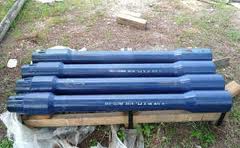
PUP JOINTS are a joint of pipe of non-standard length used to adjust the length of tubular strings to exact requirement. We provide both tubing (2 3/8” to 4”) and casing (4” to 13 3/8”) in all lengths. With our myriad of licenses (quality page) we are able to cut to length, thread and couple to meet specified needs. API casing and tubing pup joints are manufactured according to API Spec 5CT using prime API monogrammed, seamless oil country tubing. Premium pup joints are also available with premium connections and in API or exotic alloy grades.
MARKER JOINTS are a joint of tubing used in a workover or completion tubing string that serves as a position or depth indicator. In most cases, a marker joint is significantly shorter than other joints in the string so that it is easily noticeable.

BLAZE is adequately equipped to supply NPST Pup joints made of high quality seamless pipeline with male & female detachable hammer union. NPST has uniform bore for greater flow capacity. NPST pup joints are available in 2″ to 4″ sizes, length for pup joint range from 1 feet to 20 feet at 15000 psi. Pup joint with Non- pressure seal thread union (NPST) are especially engineered for high pressure, abrasive services where welded connections are not desired. The design provides a strong, permanent end connection without butt welding. An epoxy thread-locking compound secures the connection.
Casing or Tubing Pup Joints, Casing or Tubing Connectors and Casing or Tubing Couplings. In addition it is capable of Threading items at Groups 1, 2, 3 & 4 of API spec. 5CT. Items supplied by BLAZE meet the Quality Standards as defined in API 5CT assuring
BLAZE is also well equipped to supply Line Pipe Couplings/ NPST pup joints with wide range of specifications. In addition we can supply thread Line Pipes and its accessories of various sizes. Items meet the quality standards as laid down in API – 5L.
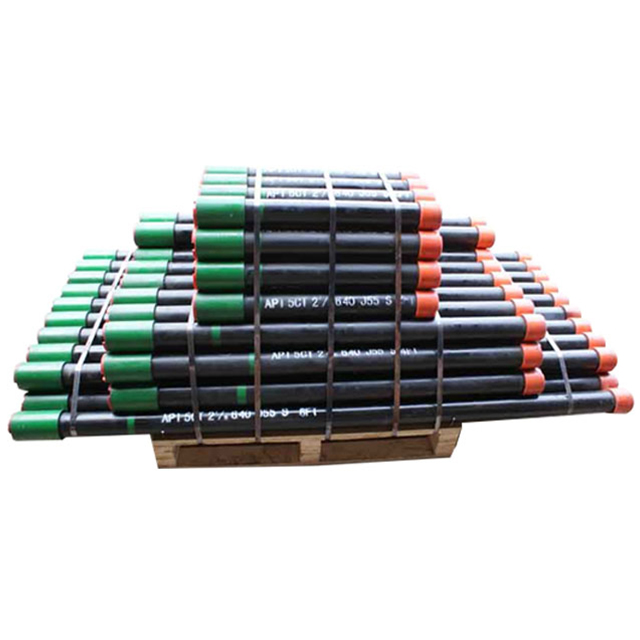
Pup Joint Inc. is a machine shop that sells down hole tubular and casing accessories and equipment. We are a leading supplier of pup joints & accessories with API5CT & premium threads at very competitive prices. Our machine shop is a threading facility for all your threading & precision machining needs. PJI commenced operations in Houma, LA in July of 1997. Our staff has over 65 years of combined experience supplying quality products & services to the oil & gas industry.
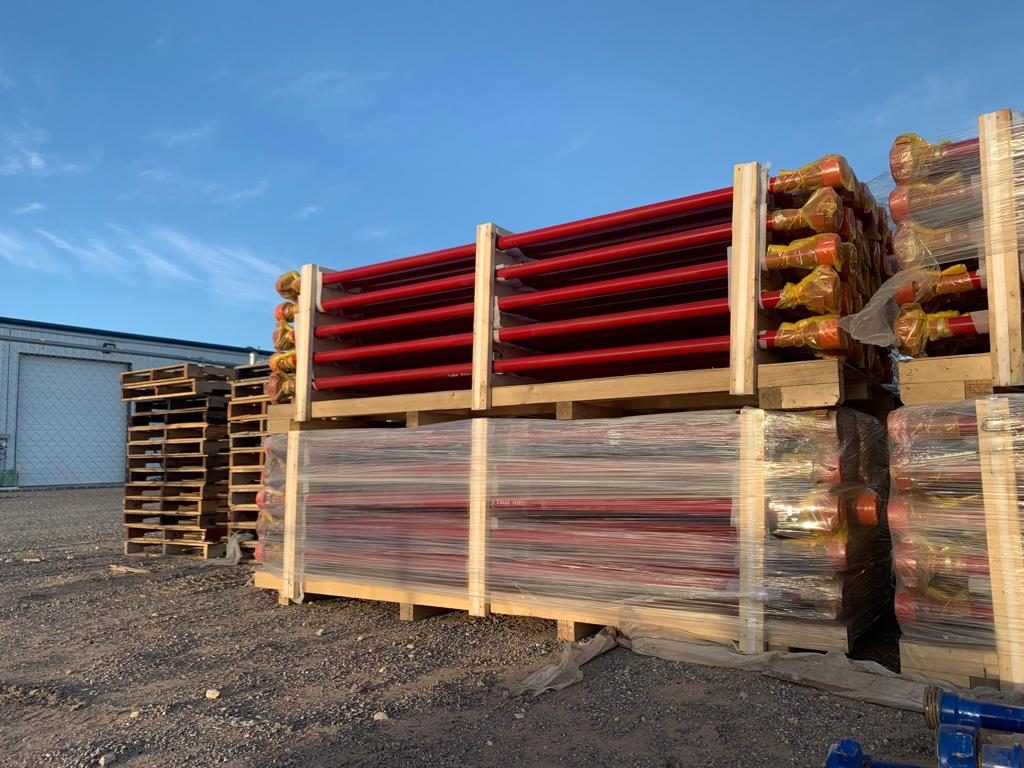
[1] On July 22, 2011, the Canada Border Services Agency (CBSA) received a written complaint from Alberta Oil Tool (AOT), a division of Dover Corporation (Canada) Limited of Edmonton, Alberta, (hereafter, "the Complainant") alleging that imports of certain pup joints originating in or exported from the People"s Republic of China (China) are being dumped and subsidized and causing injury to the Canadian industry.
[4] On September 12, 2011, pursuant to subsection 31(1) of SIMA, the President of the CBSA (President) initiated investigations respecting the dumping and subsidizing of certain pup joints from China.
[5] On September 13, 2011, the Canadian International Trade Tribunal (Tribunal) commenced a preliminary injury inquiry, pursuant to subsection 34(2) of SIMA, into whether the evidence discloses a reasonable indication that the alleged dumping and subsidizing of certain pup joints from China have caused injury or retardation or are threatening to cause injury to the Canadian industry producing the goods. On November 14, 2011, pursuant to subsection 37.1(1) of SIMA, the Tribunal determined that there is evidence that discloses a reasonable indication that the alleged dumping and subsidizing of certain pup joints have caused injury or retardation or are threatening to cause injury to the domestic industry.
[6] On December 12, 2011, the CBSA made preliminary determinations of dumping and subsidizing with respect to certain pup joints originating in or exported from China pursuant to subsection 38(1) of SIMA, and began imposing provisional duties on imports of the subject goods pursuant to subsection 8(1) of SIMA.
[8] The CBSA continued its investigations and, on the basis of the evidence, the President is satisfied that certain pup joints originating in or exported from China have been dumped and subsidized and that the margins of dumping and the amounts of subsidy are not insignificant. Consequently, on March 12, 2012, the President made final determinations of dumping and subsidizing pursuant to paragraph 41(1)(a) of SIMA.
[10] Each of the two investigations has its own separate Period of Investigation (POI). The dumping POI includes shipments of subject pup joints released into Canada from July 1, 2010 to June 30, 2011, while the subsidy POI includes shipments of subject pup joints released into Canada from January 1, 2010 to June 30, 2011.
[13] Of the other producers certified to produce the like goods in Canada, only Tenaris Canada (Tenaris), of Sault Ste. Marie, Ontario, confirmed that they are manufacturing them. Tenaris produces like goods which are premium pup joints in relatively small quantities and provided a letter supporting the complaint.[1]
[22] As part of the section 20 inquiry, RFIs were sent to all known producers of pup joints in other countries (excluding China). This list of certified producers was obtained directly from the American Petroleum Institute (API). Although seven producers indicated their intention to provide a response, no complete response to the Surrogate RFI was ever received.
“Oil country tubular goods pup joints, made of carbon or alloy steel, welded or seamless, heat-treated or not heat-treated, regardless of end finish, having an outside diameter from 2 3/8 inches to 4 1/2 inches (60.3 mm to 114.3 mm), in all grades, in lengths from 2 feet to 12 feet (61 cm to 366 cm) originating in or exported from the People"s Republic of China.”
[24] Pup joints are oil country tubular goods (OCTG) made from carbon or alloy steel pipes used for the exploration and exploitation of oil and natural gas. These pipes may be made by the electric resistance welded (ERW) or seamless production method, and are supplied to meet API specification 5CT or equivalent standard.[6]
[25] Pup joints are primarily used for the purpose of adjusting the depth of strings or down hole tools, particularly where exact depth readings in a well are required for any given purpose, such as setting valves, packers, nipples or circulating sleeves. Pup joints are also used with down hole pumps. The number and lengths of pup joints may vary widely from well to well, depending on the various equipment and performance requirements established by engineers of the purchasing end users.
[26] Pup joints may range from 2 feet to 12 feet in length with a permitted tolerance of plus or minus three inches. The sizes are generally 2, 4, 6, 8, 10 and 12 feet in length.
[27] The pup joints subject to these investigations are, by virtue of the characteristics such as the outside diameter range, essentially short lengths of OCTG tubing.
[28] Pup joints are manufactured in Canada by the Complainant using plain end tube as an input. For J55 grade pup joints, a length of J55 OCTG tubing is employed. For L80 grade pup joints, the input is an A-519 mechanical tube with the appropriate steel chemistry for L80 OCTG. The L80 input tube does not qualify for the API 5CT designation until it has been tested in accordance with API requirements. The Complainant performs the testing required.
[30] The production process of the input pipe itself is virtually identical to that employed for OCTG tubing and casing. There are, however, significant subsequent costs associated with transforming the input tubing into pup joints including: cutting to length, end finishing, threading, and testing to meet the certification required.
[31] For J55 grade pup joints, the Complainant produces an upset end by heating (upset forging) and butting to thicken the end of the pipe diameter for threading. J55 tubing is cut 8 inches longer than the required pup joint length to accommodate this process. In the case of L80 grade pup joints, the production process uses profiling rather than upset ends, and accordingly only 1/4 inch of additional length is needed to accommodate finishing. Profiling refers to machining the pipe towards the ends of the pipe so it is thicker at the far ends. This process is used instead of upsetting because upsetting a pipe with steel chemistry for an L80 grade would require the producer to heat-treat the pipe again.
[32] Testing includes drift testing which is an assessment of the straightness within the hollow part of the tube, to ensure no bends or kinks exist after the pup joint was forged, and hydrostatic testing which assesses the pup joint’s ability to withstand internal pressure.
[35] The listing of HS codes is for convenience of reference only. The HS codes listed may include non-subject goods. Also, subject goods may fall under HS codes that are not listed. Refer to the product definition for authoritative details regarding the subject goods.
[40] Regarding the dumping investigation, information was requested from known and potential exporters, vendors and importers, concerning shipments of subject pup joints released into Canada during the dumping POI of July 1, 2010 to June 30, 2011.
[41] Regarding the subsidy investigation, information related to potential actionable subsidies was requested from known and potential exporters and the GOC concerning financial contributions made to exporters or producers of subject pup joints released into Canada during the subsidy POI of January 1, 2010 to June 30, 2011.
[42] In addition, known and possible exporters and producers of pup joints, along with the GOC, were requested to respond to the section 20 RFI for the purposes of the section 20 Inquiry.
[55] The Complainant requested that section 20 be applied in the determination of normal values due to the alleged existence of the conditions set forth in paragraph 20(1)(a) of SIMA. In their complaint, the Complainant provided information to support these allegations concerning the steel industry in China including the OCTG sector, which includes pup joints.[15]
[56] At the initiation of the dumping investigation, the CBSA had sufficient information from the Complainant, the CBSA’s own research and previous CBSA section 20 opinions to support the initiation of a section 20 inquiry to examine the extent of GOC involvement in pricing in the OCTG sector, which includes pup joints. The information indicated that domestic prices in China have been influenced by various GOC industrial policies concerning the Chinese steel industry including the OCTG sector, which includes pup joints.
[60] As part of the CBSA’s examination of the OCTG sector in China, which includes pup joints, the GOC was requested to provide information concerning the Chinese manufacturers of OCTG by region, the type of products produced (i.e. welded versus seamless) and their respective steel production capacities. In addition, the GOC was requested to indicate the ownership structure of each manufacturer along with information pertaining to OCTG manufacturers that are State-Owned Enterprises (SOE).
[63] Furthermore, according to recent legislation passed by the GOC, through the Criterion for the Production and Operation of Steel Industry – GY [2010] No. 105,[17] there is an application process that requests this information from producers along with additional detailed information concerning output value, sales revenue, profits etc. At minimum, the GOC has the information available from its SOEs, which comprise a substantial proportion of the top OCTG producers in the sector. This indicates that the information requested by the CBSA is available to the GOC and current information from the GOC regarding the OCTG sector in China, which includes pup joints, would have been useful to the CBSA in its analysis.
[65] The following is the CBSA’s analysis of the relevant factors that prevail in the Chinese steel industry, which subsequently affect the OCTG sector, which includes pup joints.
[70] The 2009 Steel Revitalization/Rescue Plan also applies to the OCTG sector in China, which includes pup joints. There is evidence on the record confirming that the GOC specifically directed one of the cooperating exporters in the OCTG (2010) investigation, which was one of the largest SOE producers, and possibly the largest seamless OCTG manufacturer, to reorganize with another company.[20]
[83] Based on the information on the record, the scope of the GOC’s macro-economic policies/measures provide a compelling factual basis that the GOC is influencing the Chinese steel industry including the OCTG sector, which includes the pup joints under investigation.
[88] Information on the record further illustrates that GOC macro-economic policies/measures are compulsory and followed by local governments, with substantive impacts on the commercial decisions of producers of pup joints.[33]
[91] Wuxi Forest Petroleum Technology Co., Ltd. (Wuxi Forest) had provided a response to the CBSA’s dumping RFI which had Chinese domestic sales of pup joints.[37] Wuxi Forest is a Chinese trading company and is not a manufacturer of pup joints. The company’s exports to Canada were subsequently found to be non-subject to the investigation. Wuxi Forest had purchased pup joints in China for re-sale during the POI. The acquisition cost of these pup joints represent actual Chinese domestic sales of pup joints. These Chinese domestic sales are all grade P110 pup joints which is a high-end API 5CT specification.[38] The CBSA used these Chinese domestic selling prices of pup joints for the following analysis.
[92] Firstly, the CBSA compared the overall average selling price of these P110 goods sold in China, with U.S. selling prices of High Collapse P110 (HCP) as reported by Pipe Logix during the POI.[39] Pipe Logix does not report U.S. domestic selling prices for ordinary P110 grade product, as it is not normally sold in the US domestic market. However, P110 is required for some applications in the Canadian oilfield where there are sour gas environments. HCP pipe is not an equivalent grade but a very comparable specification to the P110. A comparison of the HCP to the P110 grades based on like outside diameters (OD) and nominal weights of 11.6 pounds per foot (lbs/ft) for the Chinese and U.S. products indicates that the selling price of Chinese P110 pup joints was less than the selling prices of standard length HCP casing in the U.S. (likely about a 30 foot length), on a metric tonne basis.
[93] To put this in perspective, if the Chinese domestic pup joints were all of 10 foot lengths, there would be approximately 19 pup joints in a metric tonne with each end piece finished and tested according to the API 5CT specification. [40] In contrast, the reported U.S. Pipe Logix selling price, on a metric tonne basis, is comprised of average standard lengths of about 30 feet, meaning each tonne would comprise roughly six 30 foot lengths with finished and tested ends according to the API 5CT specification.[41] With the same OD and 11.6 lbs/ft nominal weight in each example, the Chinese domestic prices do not reflect the additional cost and resulting incremental value in selling price for the additional 13 finished end pieces of pup joints. This is a conservative example in respect of the Chinese selling price. One metric tonne of the Chinese goods could alternatively be comprised of 63 three foot pup joints, each with finished and tested ends according to the API 5CT specification.[42] This would illustrate an even greater cost and a substantial selling price differential.
United States to Canada during the POI.[43] In this comparison, the CBSA did not have sales of P110 in the same OD and lbs/ft as the Chinese goods but both were similar. The OD and nominal weight for the US selling prices were 3.5 inches and 9.3 lbs/ft compared to the Chinese product of 4.5 inches and 11.6 lbs/ft, which are sufficiently similar for comparison purposes. The lengths of the pup joints were the same at six feet. This comparison of selling prices indicates that the Chinese pup joints were 86% below that of the U.S. selling price. Consequently, in this comparison, the Chinese pup joint price is markedly lower than competitive market pricing for the same grade and same length of pup joint.
[95] In a third comparison, the CBSA compared the overall average domestic Chinese P110 pup joint selling price with the lowest U.S. selling prices of the lowest grade of API 5CT specification, J55, as per the Pipe Logix report over the POI.[44] The Chinese selling price was 34% lower than the U.S. J55 selling price.
[96] Each of the CBSA’s comparisons indicates that Chinese domestic pup joint selling prices are substantially below corresponding competitive market prices. Based on the CBSA’s price analysis, the evidence indicates that Chinese domestic OCTG pup joint prices are not substantially the same as they would be if they were determined in a competitive market.
[97] The wide range and material nature of the GOC measures have resulted in significant influence on the Chinese steel industry including the OCTG sector, which includes pup joints. The conditions described in paragraph 20(1)(a) of SIMA exist in this sector. Domestic prices are substantially determined by the GOC, and there is sufficient reason to believe that the domestic prices of pup joints are not substantially the same as they would be in a competitive market.
[98] Based on the above analysis, for the purposes of the final determination, the President affirmed the opinion rendered at the preliminary determination that the conditions described in paragraph 20(1)(a)apply in the OCTG sector in China, which includes pup joints.[45]
[100] For purposes of the preliminary determination, normal values could not be calculated on the basis of domestic selling prices in China or on the full cost of goods plus profit, as the President formed the opinion that the conditions described in section 20 exist in the OCTG sector, which includes pup joints.
[105] While the CBSA does not have sufficient pricing, costing or import data available relating to a surrogate country, it does have pricing information for pup joints imported into Canada from, and originating in, the United States. This information was acquired from internal import data and from brokers representing the importers of these goods.[46] For the purposes of the final determination, normal values were determined on the basis of these prices.
[106] The normal values for each subject good exported to Canada by Hengshui Weijia over the period of investigation was based on the price of imported pup joints from the United States which matched the major characteristics used to identify these goods. Where such a match was not possible on a given transaction, the difference between the total normal value and the total export price for all other transactions for which matches were made, expressed as a percentage of this total export price, was used to establish the normal value.
[114] Under paragraph 41(1)(a) of SIMA, the President shall make a final determination of dumping when he is satisfied that the goods have been dumped and that the margin of dumping of the goods of a country is not insignificant. Pursuant to subsection 2(1) of SIMA, a margin of dumping of less than 2% is defined as insignificant. The margin of dumping of certain pup joints from China is not less than 2% and is, therefore, not insignificant.
[119] A review of the information submitted by Hengshui Weijia revealed that the company had no domestic sales during the POI. All Hengshui Weijia production is for export and all products are pup joints.
[120] Normal values for Hengshui Weijia were determined pursuant to a ministerial specification under subsection 29(1) of SIMA. The normal values for each subject good exported to Canada by Hengshui Weijia over the period of investigation was based on the price of imported pup joints from the United States which matched the major characteristics used to identify these goods. Where such a match was not possible on a given transaction, the difference between the total normal value and the total export price for all other transactions for which matches were made, expressed as a percentage of this total export price, was used to establish the normal value.
[168] On the basis of the results of the investigation, the President is satisfied that certain pup joints originating in or exported from the People’s Republic China, have been dumped and that the margin of dumping is not insignificant. Consequently, on March 12, 2012, the President made a final determination of dumping pursuant to paragraph 41(1)(a) of SIMA respecting the subject goods.
[169] Similarly, on the basis of the results of the investigation, the President is satisfied that certain pup joints originating in or exported from the People’s Republic of China have been subsidized and that the amount of subsidy is not insignificant. As a result, the President also made a final determination of subsidizing pursuant to paragraph 41(1)(a) of SIMA respecting the subject goods on this same date.
“More specifically, in regards to operations or production capacity of companies in the OCTG sector, the GOC has stated unequivocally that there is no approval required concerning additional capacity and/or joint venture and that modifications on additions of capacity and/or joint ventures concerning OCTG are ultimately decided by the producers themselves.”[84]
As part of the preliminary determination of dumping, the President formed the opinion that the conditions of section 20 exist in the Chinese OCTG sector, which includes pup joints.
The CBSA has undertaken extensive research into the GOC’s involvement in the steel industry, including the Chinese OCTG sector, which includes pup joints. The CBSA has formed the section 20 opinion on the OCTG sector in China in two previous investigations – Seamless Steel Casing (2008) and Oil Country Tubular Goods (2010). The full details of this research are available on the CBSA’s listing of exhibits.
Counsel for the GOC objected to the CBSA using any methodology for calculating normal values that was not based upon the “timely filed, verifiable and accurate information governing the pup joints sector in China.”[110] The GOC also claimed that the “GOC and its producers have clearly established that market economy conditions prevail in the OCTG industry.”[111]
At the time of the preliminary determination, the President formed the opinion that the conditions of section 20 exist in the OCTG sector, which includes pup joints. Where section 20 conditions exist, the CBSA may determine normal values using the selling price, or the total cost and profit, of like goods sold by producers in a surrogate country designated by the President pursuant to paragraph 20(1)(c) of SIMA or, failing that, paragraph 20(1)(d) of SIMA provides for calculating normal values using re-sales in Canada of goods imported from a third country. The CBSA was unable to obtain sufficient information for either of these two approaches and accordingly used an alternative method to estimate normal values for purposes of the preliminary determination.
For the purposes of the final determination, a more comprehensive analysis using actual imports of goods matching the subject good characteristics from the United States were used as basis for normal values. These normal values were compared with the exported goods from the cooperative exporter. The CBSA considers this to be the best available information, given the lack of pricing information on the record, in spite of the CBSA’s efforts to obtain it from other producers of pup joints.
Furthermore, although counsel for the GOC suggested the use of Brazil as a more appropriate surrogate alternative to, for example, domestic selling prices in the United States, the CBSA notes that counsel provided no evidence of such prices for the CBSA’s consideration. In fact, all statements made in relation to Brazil in case arguments, regarding its production capability for both oil and OCTG etc. were without any reference to evidence on the record. Had counsel for the GOC or any other interested party submitted documentation to support these statements, the CBSA would have considered it as part of its surrogate country analysis. As such, the CBSA had very little information in regards to domestic selling prices in other countries for OCTG in general, let alone pup joints.
It is also worthy to note that at the initiation of the investigation, the CBSA did contact producers of pup joints in Brazil, requesting that they respond to the RFI provided to them for the purposes of a surrogate country analysis.[115] As stated earlier, no responses to the surrogate RFI were received.
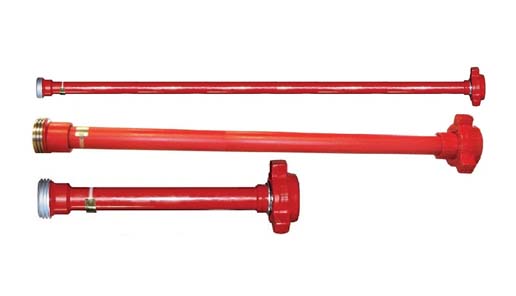
[69]As mentioned earlier, four parties provided responses to the CBSA’s ERQ: Canadian producers AOT and Tenaris Canada and related importer and exporter WestCan and Weijia. In addition to ERQ responses, AOT, WestCan and Weijia submitted case briefs. All four parties made representations that dumping of pup joints from China is likely to continue or resume should the CITT rescind its finding.
[71]A narrower picture of the steel market, the seamless pipe market - of which pup joints are a small subset - offers a similar view. According to data from China’s National Bureau of Statistics, the country’s seamless pipe output increased to a record yearly high of 29.63 million metric tons in 2013 due in part to newly commissioned capacity. CISA affiliated China Metallurgical News (CMN) predicted that, due to oversupply and lukewarm domestic demand, the seamless pipe industry would likely remain under downward pressure in 2014. CMN also warned that the ramp-up in China’s seamless pipe production was likely to continue and that the overcapacity could cause the surplus to worsen in the coming years.
[74]Specific information on production volumes and production capacities of pup joint producers in China is difficult to obtain. The reason for this is that pup joints are a very small subset of a much larger group of products called OCTG, comprised primarily of casing, tubing and drill pipes. Due to the small quantities of pup joints produced and the correspondingly small revenues generated from their sales, many companies do not track their production independently. OCTG producers, who are primarily concerned with producing and selling full length casing and tubing products, may simply merge pup joint production data with that of either casing or tubing since pup joints are often considered smaller pieces of casing and tubing. Despite the difficulties encountered in finding accurate production data on pup joints, either from producers themselves or from trade publications, there is sufficient information on the CBSA’s record pertaining to the broader category of OCTG products as well as information pertaining to a limited number of pup joint producers in China.
[76]OCTG producers in China who also produce pup joints include such companies as: Shandong Molong Petroleum Machinery, which boasts production capacity of 650,000 mt/y;
[80]In Canada, there are currently 11 different steel products from China that are subject to anti dumping duty, not including pup joints. Of note are many tubular products such as carbon steel welded pipe and piling pipe and, more specifically, line pipe, OCTG and seamless casing.
[81]As stated above, pup joints from China are not only subject to a finding in Canada but are also subject to an anti-dumping duty order in the U.S. by virtue of being included under the product definition of ‘oil country tubular goods from China’. In May 2015, the U.S. International Trade Commission extended anti-dumping duty orders on OCTG from China for a further five years. Based on the fact that the North American market is one of the largest OCTG markets in the world, and the fact that the Canadian and American markets are highly integrated with many of the same players, there is a distinct possibility that pup joints from China will be diverted from the U.S. market to Canada to be sold at unrestricted prices should the finding be rescinded.
[82]In the CBSA’s original dumping investigation of pup joints from China, which was initiated in 2011, Weijia was the only exporter to participate. Similarly, Weijia was the only exporter of pup joints to participate in the CBSA’s re-investigation of these goods in 2015. In both instances Weijia received a ruling letter from the CBSA outlining how the company would receive normal values on a monthly basis. The normal values would be based in part on the selling prices of tubing product sold in the U.S. and tracked by the trade publication Pipe Logix. It is noteworthy that Weijia has been able to sell to WestCan, its related importer in Canada, during the POR while imports of subject pup joints from other exporters in China have ceased. The lack of cooperation of other exporters in the re-investigation and the fact that all other exporters have vacated the Canadian market while Weijia has remained is a telling indication of the inability of other exporters in China to compete in Canada at non dumped prices.
[83]Also telling are the comments made by certain pup joint producers in China and obtained by AOT in response to its request for price quotations. The comments indicate that Canadian customers stopped purchasing pup joints once anti-dumping and countervailing duties were put in place in December 2011.
[84]In order to determine at what price levels pup joints from China might re enter the Canadian market absent the finding, WestCan procured a number of quotes from potential suppliers in that country.
[85]The likelihood of continued or resumed dumping of pup joints from China must be examined in context of what is happening in Canada’s oil and gas industry, in which OCTG products play an integral role. In 2014 oil prices peaked at around $US115/barrel, fell to $US27/barrel in January 2016 and have remained under $US50/barrel ever since. The rapid declines in oil prices in 2015 and 2016, along with continued weakness in gas, caused a dramatic decline in drilling activity in Canada. In 2013 and 2014, 11,000 wells were drilled in North America but drilling declined to 5,300 wells in 2015 and it is anticipated that only 3,400 wells will be drilled in 2016.
[86]Based on information on the record demonstrating the significant production capabilities of OCTG and pup joint producers in China and a slowing demand for these products in that country; anti-dumping measures being imposed by Canada and other countries on the same or closely-related tubular products from China; and the inability of exporters, save one, to sell pup joints in Canada at non-dumped prices, the CBSA determined that the expiry of the finding is likely to result in the continuation or resumption of dumping into Canada of certain pup joints originating in or exported from China.

On Friday April 7, 2017 the Canadian International Trade Tribunal (CITT) issued an order to advise that it has conducted an expiry review of its findings in the matter of dumping and subsidizing of pup joints from the People’s Republic of China (China) and is continuing its finding without amendment.
The subject goods are defined as oil country tubular goods (OCTG) pup joints, made of carbon or alloy steel, welded or seamless, heat-treated or not heat-treated, regardless of end finish, having an outside diameter from 2 3/8 inches to 4 1/2 inches (60.3 mm to 114.3 mm), in all grades, in lengths from 2 feet to 12 feet (61 cm to 366 cm), originating in or exported from China.
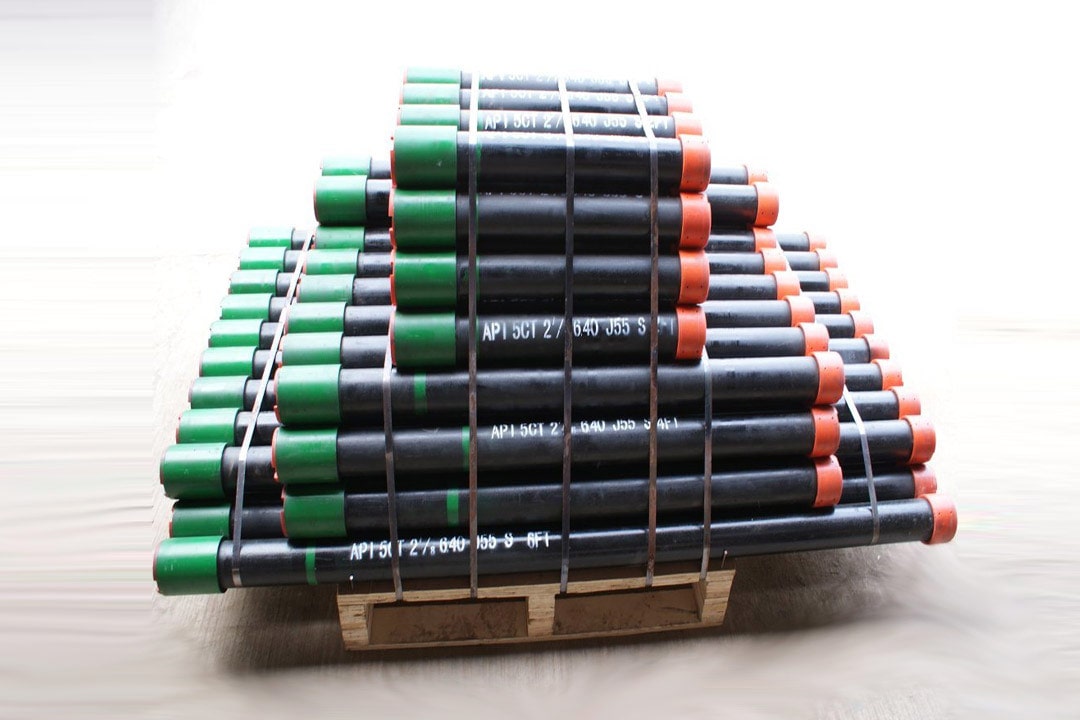
The Pup Joint Market research report is the result of persistent work conducted by qualified forecasters, creative analysts, and brilliant researchers. With the specific and up-to-date information provided in this report, businesses can gain an understanding of the types of consumers, consumer demands and preferences, their perspectives on the product, their purchasing intentions, their response to a specific product that is already on the market, and their varying tastes about a specific product that is already on the market. Pup Joint Market report provides an absolute overview of the market by covering many elements of market analysis, product definition, market segmentation, significant developments, and the existing vendor landscape through 2028.
The report focuses on the Pup Joint market size, segment size (mainly covering product type, application, and geography), competitor landscape, recent status, and development trends. Furthermore, the report provides strategies for companies to overcome threats posed by COVID-19. Technological innovation and advancement will further optimize the performance of the product, enabling it to acquire a wider range of applications in the downstream market. Moreover, customer preference analysis, market dynamics (drivers, restraints, opportunities), new product release, impact of COVID-19, and regional conflicts provide crucial information for you to take a deep dive into the Pup Joint market.
This Pup Joint Market Report offers analysis and insights based on original consultations with important players such as CEOs, Managers, Department Heads of Suppliers, Manufacturers, and Distributors etc.
Here, Pup Joint Market is segmented based on type, end-use industry, and application. The growth amongst the different segments helps you in attaining the knowledge related to the different growth factors expected to be prevalent throughout the market and formulate different strategies to help identify core application areas and the difference in your target markets. Estimates of production and value are based on the price at which the Pup Joint is purchased by the manufacturers in the supply chain. This research examines each sector and estimated market size based on historical data. This study provides production and income information by type for both the historical (2017-2022) and forecasted periods (2023-2028).
This study also examines the market trends of each sector and consumer behaviors impacting the Pup Joint market, as well as the implications for the industry"s future. This research will help you understand the key market and consumer trends that are driving the Pup Joint industry. This research includes market size (production and revenue data) by application for the historical (2017-2022) and forecast years (2023-2028).
High-impact rendering factors and drivers have been studied in this report to aid the readers to understand the general development. Moreover, the report includes restraints and challenges that may act as stumbling blocks on the way of the players. This will assist the users to be attentive and make informed decisions related to business. Specialists have also laid their focus on the upcoming business prospects. The Pup Joint market size, estimations, and forecasts are provided in terms of output / shipments (Units) and revenue (USD millions). The influence of COVID-19 and the Russia-Ukraine War were considered while estimating market sizes. The report will help the Pup Joint manufacturers, new entrants, and industry chain-related companies in this market with information on the revenues, production, and average price.
We have been following both the direct and indirect effects of the Russia-Ukraine war and the COVID-19 epidemic on the Pup Joint market. To Know How Covid-19 Pandemic and Russia-Ukraine will Impact this Pup Joint Industry, this research provides an in-depth market evaluation by highlighting information on various aspects covering market dynamics like drivers, barriers, opportunities, threats, and industry news and trends. Furthermore, the report provides strategies for companies to overcome threats posed by COVID-19 period.
The research report provides a detailed market analysis. It focuses on key aspects such as leading companies, products, and end-users. Besides this, it offers insights into the trends in the global Pup Joint market and highlights key industry developments.
Reasons to buy this report: This report will help the readers to understand the competition within the industries and strategies for the competitive environment to enhance the potential profit. The report also focuses on the competitive landscape of the global Pup Joint market, and introduces in detail the market share, industry ranking, competitor ecosystem, market performance, new product development, operation situation, expansion, and acquisition. etc. of the main players, which helps the readers to identify the main competitors and deeply understand the competition pattern of the market.
With tables and figures to help analyze the global Pup Joint market trends, this study provides key statistics on the state of the industry and is a valuable source of guidance and direction for companies and individuals interested in the market.
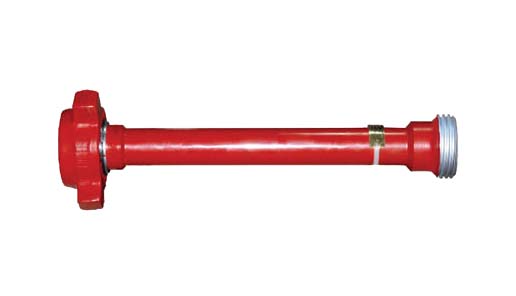
Dalipal well-established Quality System from Materials receipt to Products delivery ensures consistent quality at all levels of the activity. QMS Procedures & Measurements are tailored to establish high standards of Quality Assurance in the Operations. The Company maintains the 100% Traceability records as per API requirements&NACE MR 0175-2002 Standards and complies with all the legal, statutory and regulatory requirements.Our TUBING PUP JOINT cover all API Standard scope from 2-3/8" - 4-1/2" with strickly inspection, which all the goods should be checked one by one before packing. Euipped withthe world-class facilities and professional laboratory technicians, we pay more attention the quality of every products.
8. Our tubing pup joint conform to API 5 CT standards, Length: 2FT/3FT/4FT/5FT/6FT/8FT/10FT/12FT and we can make different lengths and sizes according to the customer"s requests.
The pup joint are used to adjust the height of full length tubing or casing strings, they are also used to adjust the depth of downhole tools.Pup Joint sets are available in: Integral Premium Thread Box-by-Pin Pin-by-Pin with couplings boxed separately Pin-by-Pin withcouplings hand tight Pin-by-Coupling Box Flush joint connections
Currently, Our Pup Joints have exported to USA, Egypt, India and UEA , etc with high quality and short supply and good service. Our couplings has got good reputation in domestic and abroad .
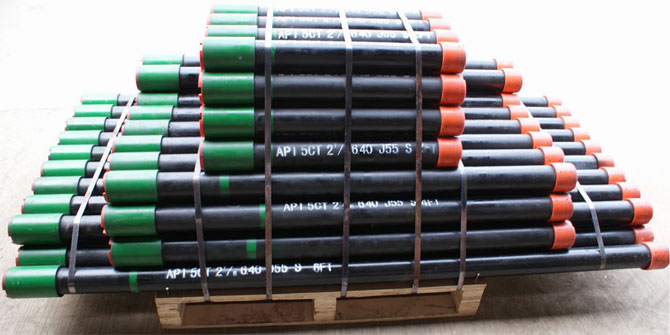
The oil casing coupling is a necessary piece used to connect the two casing. The coupling manufacturing method is the same as seamless pipe. The steel pipe ends with internal thread to connect with the upper and lower casing. In order to ensure the joint tightness, the precision of screw thread is strictly required.




 8613371530291
8613371530291